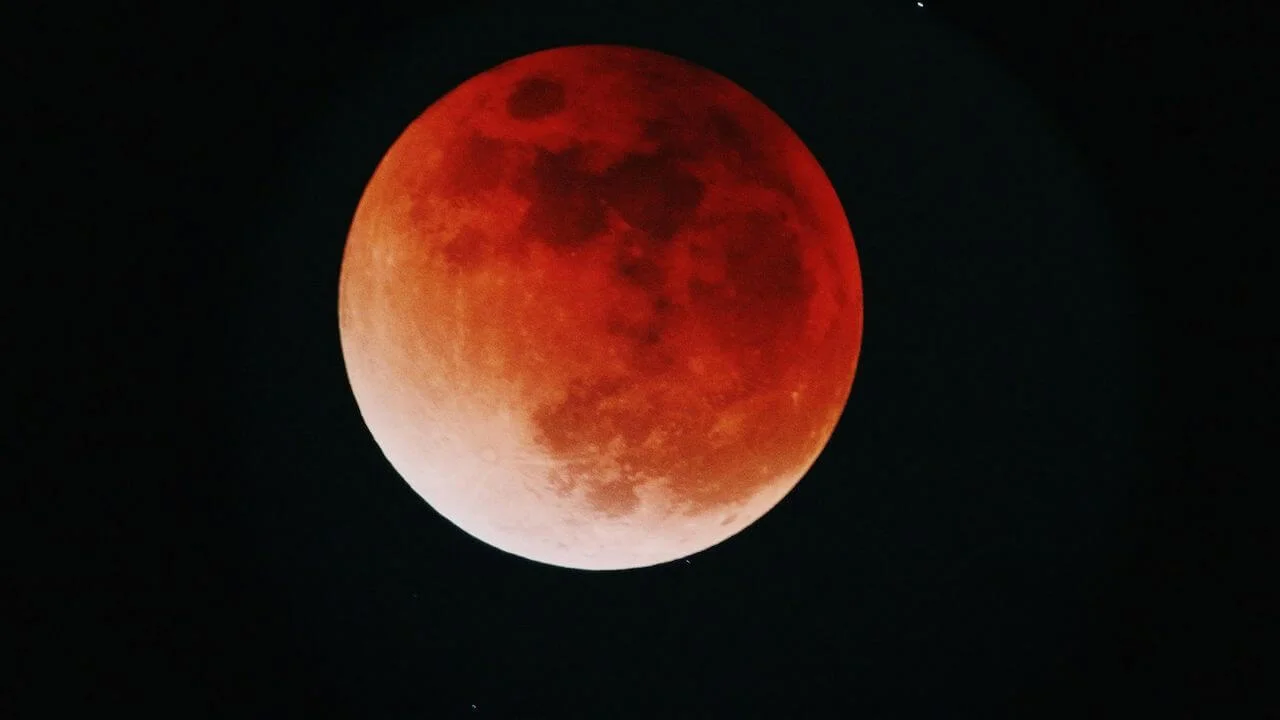Total Lunar Eclipse Blood Moon to Dazzle Skies
A rare total lunar eclipse blood moon will soon light up the skies, turning the Moon a striking red and offering a breathtaking view across continents.

Skywatchers are preparing for a spectacular total lunar eclipse, often called a blood moon, when the Moon will take on a deep red glow. This dramatic event occurs when the Earth passes directly between the Sun and the Moon, casting its shadow across the lunar surface. As sunlight filters through Earth’s atmosphere, only red and orange hues reach the Moon, creating its eerie appearance.
Where and When to Watch
The total lunar eclipse blood moon will be visible on Sunday night, with the best views across Asia, including India and China. Observers in western Australia and the eastern edge of Africa will also enjoy a clear sighting. The eclipse will last from 17:30 GMT to 18:52 GMT.
Viewers in parts of Europe and Africa may catch a partial eclipse as the Moon rises in the early evening, while the Americas will not see this event.
Related: Pakistan to Witness Longest Blood Moon Eclipse of 2025
Why the Moon Turns Red
During a lunar eclipse, Earth’s atmosphere acts like a filter. Shorter blue wavelengths of light scatter in the atmosphere, while the longer red wavelengths bend around the Earth and illuminate the Moon. This process gives rise to the red or coppery glow popularly known as the blood moon.
According to Ryan Milligan, an astrophysicist at Queen’s University Belfast, “the scattering of light is the reason the Moon appears blood red during a total lunar eclipse.”
How to Safely View the Eclipse
Unlike solar eclipses, no special glasses or protective equipment are required to witness a lunar eclipse. Clear skies and an unobstructed view of the horizon are all that is needed. The sight can be enjoyed with the naked eye, though binoculars or a telescope can enhance the experience.
Past and Future Eclipses
The last total lunar eclipse occurred in March this year, following another in 2022. Astronomers note that these events are relatively rare, making each occurrence a significant opportunity for both casual observers and scientists.
Milligan, who has traveled globally to witness 12 total solar eclipses, describes Sunday’s event as a prelude to a much-anticipated total solar eclipse set for August 12, 2026. That solar eclipse will be visible in parts of Europe, particularly Spain and Iceland, offering another remarkable celestial display.
A Moment to Connect with the Cosmos
From ancient myths to modern science, the blood moon total lunar eclipse has fascinated humanity. For many, it serves as both a reminder of the scale of the universe and a rare chance to witness Earth’s shadow at work. Whether viewed from Asia, Africa, or beyond, the moon eclipse 2025 promises to be one of the year’s most captivating natural spectacles.
This article has been fact checked for accuracy, with information verified against reputable sources. Learn more about us and our editorial process.
Last reviewed on .
Article history
- Latest version
- Last updated by Dayyal Dungrela, MLT, BSc, BS
Reference(s)
- Barry, Caela. “The Moon & Eclipses.”, 6 June 2023 NASA <https://science.nasa.gov/moon/eclipses>.
Cite this page:
- Posted by Aisha Ahmed